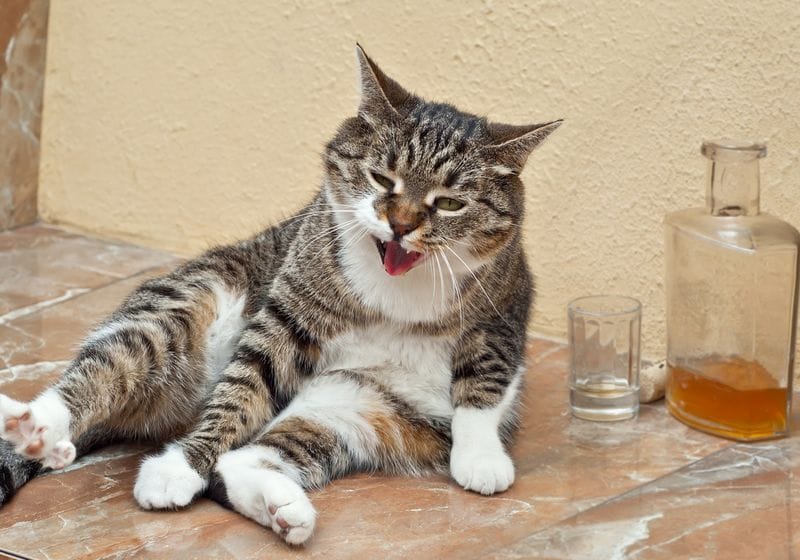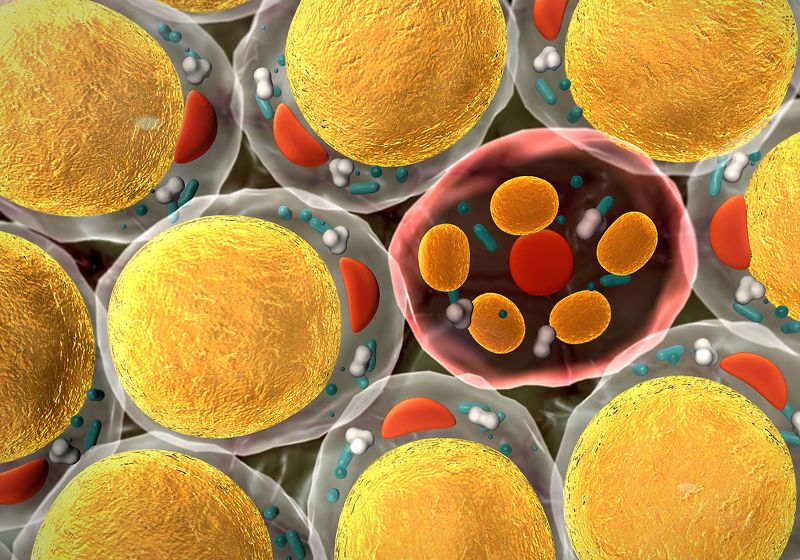Do Animals Get Drunk? | The Scientist

Many animals consume alcohol, but few, if any, get to a point of intoxication.
In 2007, Anchorage Daily News reported a goofy looking moose tangled up in Christmas lights. A local biologist guessed that the animal had eaten too many fermented crab apples from a nearby tree and may have been drunk from the alcohol in the fruit. The idea of drunk animals is simultaneously absurd and amusing—it’s not surprising that Buzzwinkle the drunk moose and his friends made the headlines.
“There’s a lot of stories like that, and they’re really funny,” said Matthew Carrigana biologist at the College of Central Florida who studies the evolution of alcohol metabolism. “But I would almost say those are one-offs.”
Matthew Carrigan is a biologist at the College of Central Florida who studies the evolution of alcohol metabolism.
Matthew Carrigan
Ethanol commonly occurs in nature, and a lot of animals in the wild, especially those whose diets consist of fruits and nectar, consume it at least occasionally.1 However, according to Carrigan, it’s disadvantageous—even dangerous—for animals to roam around while under the influence. For this reason, animals likely evolved the ability to metabolize alcohol so they wouldn’t get intoxicated. “You wouldn’t want to be swinging around in the trees at night, surrounded by predators, when you’re drunk,” Carrigan said.
Pentailed Tree Shrews Drink, But Don’t Get Drunk
According to Carrigan, one of the best documented examples of wild animals consuming alcohol is the story of the West Malaysian pentailed tree shrews. In a 2008 study in the Proceedings of the National Academy of Sciencesresearchers observed tree shrews slurping on alcoholic palm nectar in the middle of the night.2 They estimated the animals’ alcohol intake based on how much nectar they consumed and its alcohol content. The researchers also measured the level of ethyl glucuronide, an alcohol metabolite, in the tree shrews’ hair using mass spectrometry. This method is also commonly used to assess chronic alcohol consumption in humans.3,4
The researchers reported that the tree shrews’ diet mostly consisted of this alcoholic nectar. They estimated that if the tree shrews metabolized alcohol at the same rate as humans, the animals would be intoxicated for approximately a third of their lives. Yet, the tree shrews showed no signs of intoxication, which suggests that they can metabolize alcohol very effectively.
“Although it always makes me wonder, how do you know what a drunk tree shrew looks like?” Carrigan said.
Some Animals Evolved Alcohol Metabolism by Eating Fermented Fruits
Carrigan believes that there are evolutionary advantages to having a high tolerance for alcohol, but this is a tricky hypothesis to test. One possible way is to compare enzymes that metabolize alcohol, such as alcohol dehydrogenase (ADH), between modern animals and their ancestors. In a 2015 study, Carrigan and his colleagues compared the sequence and activity of ADH4 between different primates, including humans, with up to 70 million years of evolutionary distance between them.5 The researchers found that a single amino acid mutation in ADH4 allowed humans, along with chimps and gorillas, their two closest primate relatives, to metabolize ethanol approximately 40 times faster than their more distantly related counterparts. “That’s as close as facts get when it comes to paleogenetics,” Carrigan said.
Something else happened around the time that the common ancestor of humans, chimps, and gorillas formed their branch on the evolutionary tree: A climate change event, known as the middle Miocene climate transition, cooled the earth and caused forests to shrink and dry up.6,7 Carrigan said that by increasing the competition and pressure for forest-dwelling animals to survive, this change likely contributed to primates transitioning from a life in trees to one on the ground, which is rife with fermented, alcoholic fruits.8,9
“My perspective on it is that we evolved alcohol metabolism from eating fermented fruits with low ethanol, because eating lower quality fermented fruits was better than starving,” Carrigan said.
Carrigan wants to understand how humans evolved a reward system for alcohol consumption despite its unpalatable taste. “There’s a good reason to believe that alcohol addiction has an evolutionary basis,” Carrigan said. “There should be some evolved mechanism of reward, and this is the next area of molecular studies I would go into.”
- Bowland AM, et al. The evolutionary ecology of ethanol. Trends Ecol Evol. 2025;40(1):67-79.
- Wiens F, et al. Chronic intake of fermented floral nectar by wild treeshrews. Proc Natl Acad Sci U S A. 2008;105(30):10426-10431.
- Pragst F, Balikova Ma. State of the art in hair analysis for detection of drug and alcohol abuse. Clin Chim Acta. 2006;370(1-2):17-49.
- Ghosh S, et al. Does ethyl glucuronide in hair correlate with alcohol consumption? A comparative study with other traditional biomarkers among individuals with alcohol dependence syndrome. Alcohol. 2023;106:55-60.
- Carrigan MA, et al. Hominids adapted to metabolize ethanol long before human-directed fermentation. Proc Natl Acad Sci U S A. 2015;112(2):458-463.
- Flower BP, Kennett JP. The middle Miocene climatic transition: East Antarctic ice sheet development, deep ocean circulation and global carbon cycling. Palaeogeogr Palaeocl. 1994;108(3-4):537-555.
- Andrews P, Van Couvering Jah. Paleoenvironments in the East African Miocene. In: Szalay FS, ed. Approaches to Primate Paleobiology. Basel: Karger; 1975:62-103.
- McCrossin ML, et al. Fossil evidence for the origins of terrestriality among Old World higher primates. In: Strasser E. et al., eds. Primate Locomotion. Boston: Springer; 1998:353-396.
- Richmond bg, jungers wl. Orrorin Tugengensis femoral morphology and the evolution of hominin bipedalism. Science. 2008;319(5870):1662-1665.



